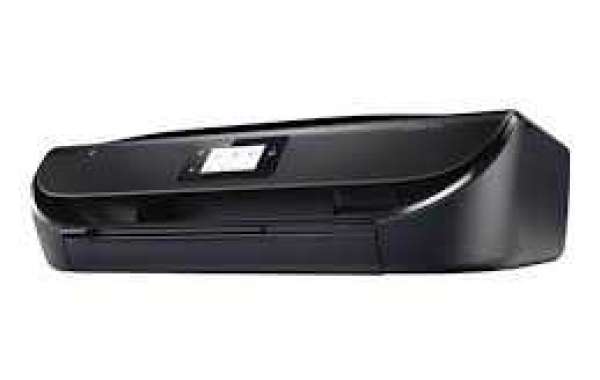Ink cartridges are essential components of any printer, providing the necessary ink to create prints on paper. But with so many options available, it can be overwhelming to choose the right ink cartridge for your needs. In this guide, we'll go over everything you need to know about ink cartridges, from the different types available to how to properly maintain them.
What are Ink Cartridges?
Ink cartridges are containers filled with ink that are used in printers to create prints on paper. They come in various colors, including black, cyan, magenta, and yellow, and can be used in both inkjet and laser printers. Ink cartridges can be either refillable or disposable, and they are typically sold individually or in multipacks.
Types of Ink Cartridges
There are three main types of ink cartridges: Original Equipment Manufacturer (OEM) cartridges, remanufactured cartridges, and compatible cartridges.
Original Equipment Manufacturer (OEM) cartridges
OEM cartridges are produced by the same company that manufactured your printer. They are known for their high quality and compatibility with your printer, but they can be more expensive than other options.
Remanufactured cartridges
Remanufactured cartridges are recycled cartridges that have been cleaned, refilled, and tested to ensure they meet the same quality standards as OEM cartridges. They are typically less expensive than OEM cartridges, but their quality can vary depending on the manufacturer.
Compatible cartridges
Compatible cartridges are third-party cartridges that are made to work with your printer. They are typically the least expensive option, but their quality can vary, and they may not be compatible with all printers.
Differences between Ink and Toner Cartridges
Ink cartridges are used in inkjet printers, while toner cartridges are used in laser printers. Ink cartridges contain liquid ink that is sprayed onto the paper, while toner cartridges contain a fine powder that is fused onto the paper using heat.
Factors to Consider When Choosing Ink Cartridges
When choosing ink cartridges, there are several factors to consider, including printer compatibility, page yield, print quality, and cost.
Printer compatibility
Not all ink cartridges are compatible with all printers, so it's important to check the compatibility before purchasing. Using the wrong ink cartridge can damage your printer or produce poor-quality prints.
Page yield
Page yield refers to the number of pages that can be printed with one cartridge. Higher page yields mean you'll need to replace cartridges less frequently, which can save you money in the long run.
Print quality
The print quality of ink cartridges can vary depending on the type and brand. Some cartridges produce sharper, more vibrant colors, while others may produce faded or blurry prints.
Cost
The cost of ink cartridges can vary widely depending on the type and brand. OEM cartridges are typically the most expensive, while compatible cartridges are usually the least expensive. However, cheaper cartridges may not always offer the same quality as more expensive options.
How to Replace an Ink Cartridge
Replacing an ink cartridge can vary depending on the printer model, but here are some general steps to follow:
Turn off the printer and unplug it.
Open the printer cover to access the cartridge holder.
Remove the old cartridge by pressing down on it and pulling it out.
Take the new cartridge out of its packaging and remove any protective tape or covers.
Insert the new cartridge into the holder, making sure it clicks into place.
Close the printer cover and plug in the printer.
Turn on the printer and run a test print to ensure the cartridge is working properly.
How to Store Ink Cartridges
Proper storage can help extend the life of your ink cartridges. Here are some tips to follow:
Keep cartridges in their original packaging until you're ready to use them.
Store cartridges in a cool, dry place, away from direct sunlight.
Keep cartridges away from heat sources, such as radiators or heaters.
Avoid storing cartridges in humid areas or near sources of moisture.
Tips for Extending the Life of Ink Cartridges
To extend the life of your ink cartridges and get the most out of your printer, here are some tips to follow:
Print regularly
Print regularly, even if it's just a test page, to keep the ink flowing and prevent the nozzles from clogging.
Keep the printer clean
Regularly clean your printer to prevent dust and debris from building up and clogging the nozzles.
Use the right paper
Using the right type of paper can help prevent smudging and fading. For best results, use the paper recommended by your printer manufacturer.
Store cartridges properly
Follow the tips above for proper cartridge storage.
Common Problems with Ink Cartridges and How to Fix Them
Ink cartridges can sometimes cause problems, such as poor print quality or error messages. Here are some common problems and how to fix them:
Poor print quality
Poor print quality can be caused by a clogged nozzle or low ink levels. Try cleaning the nozzle or replacing the cartridge.
Error messages
If you're getting an error message, try removing and reinserting the cartridge, or restarting your printer.
Leaking ink
If your cartridge is leaking ink, try wiping it with a clean, damp cloth. If the problem persists, replace the cartridge.
Recycling and Disposing of Ink Cartridges
Ink cartridges can be recycled or disposed of in an environmentally friendly way. Many office supply stores offer ink cartridge recycling programs, or you can check with your local recycling center.
Conclusion
Ink cartridges are an essential component of any printer, but choosing the right one can be overwhelming. By considering factors such as printer compatibility, page yield, print quality, and cost, you can make an informed decision and get the most out of your printer. Proper maintenance and storage can help extend the life of your cartridges and prevent common problems.








